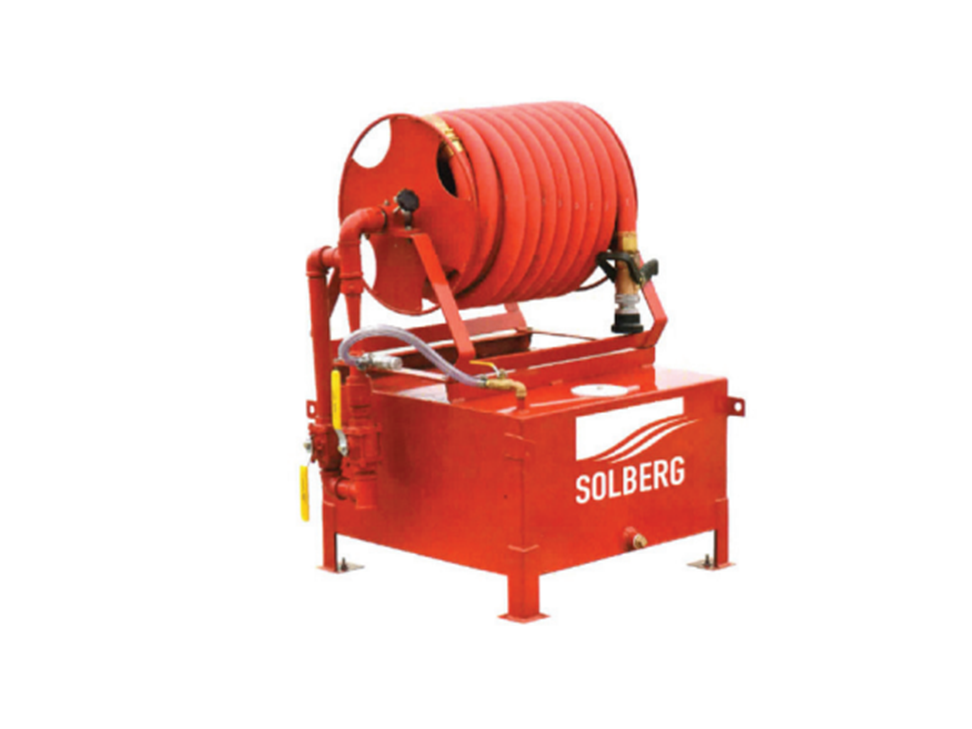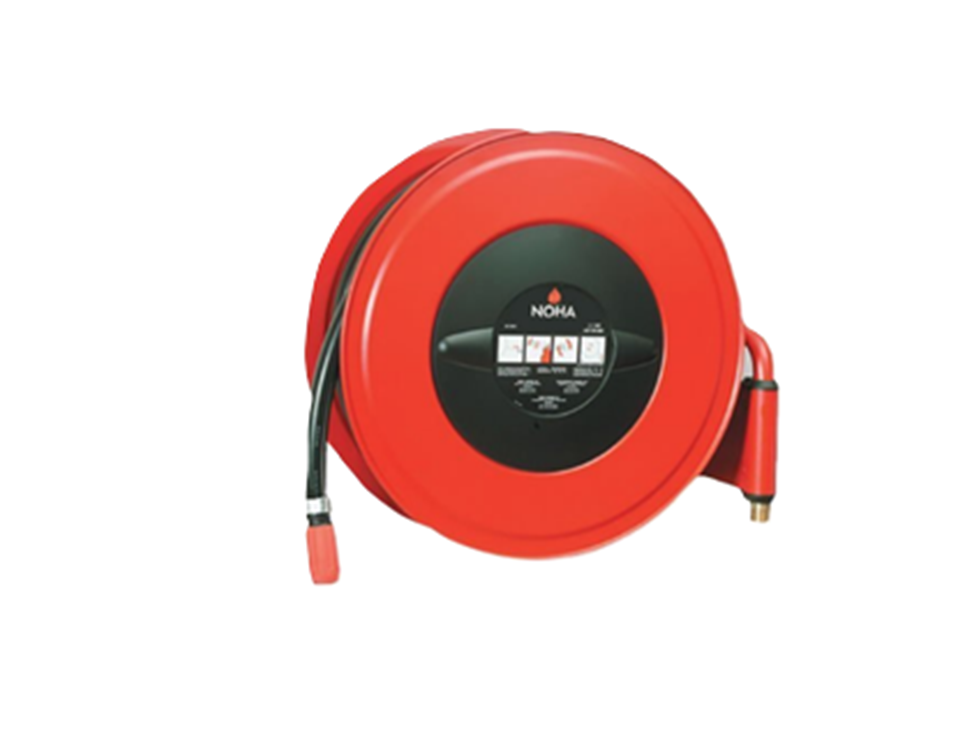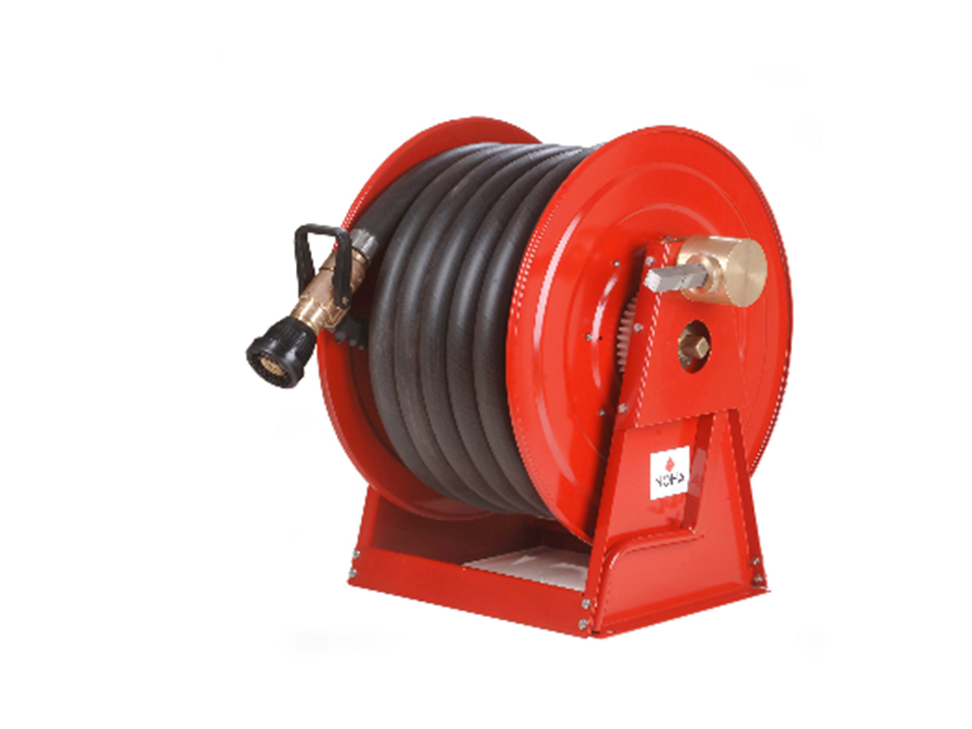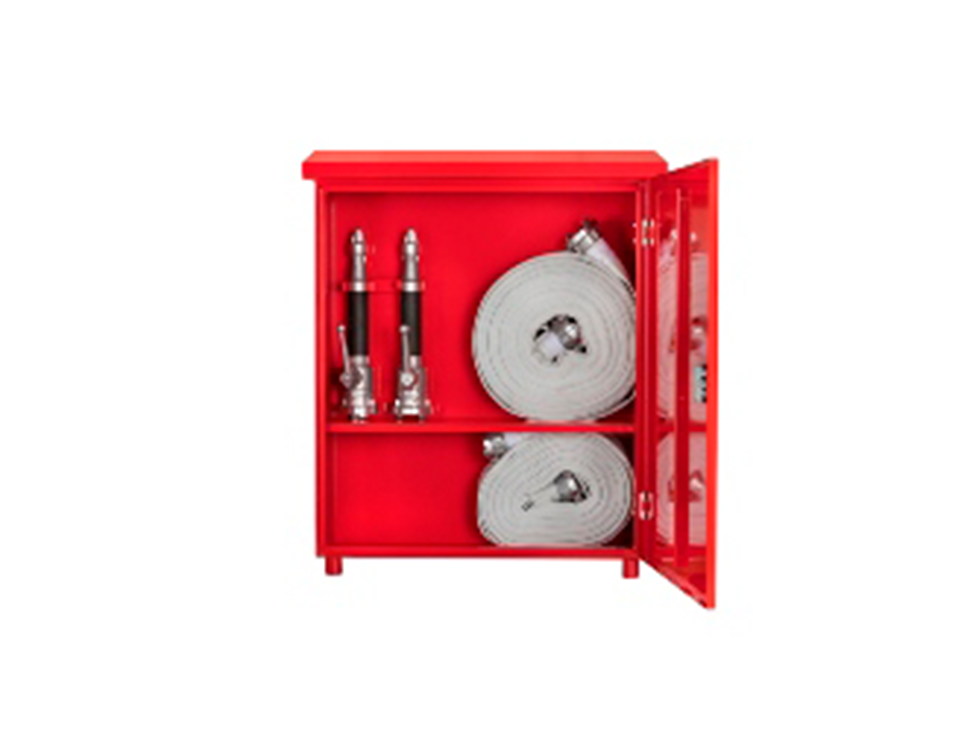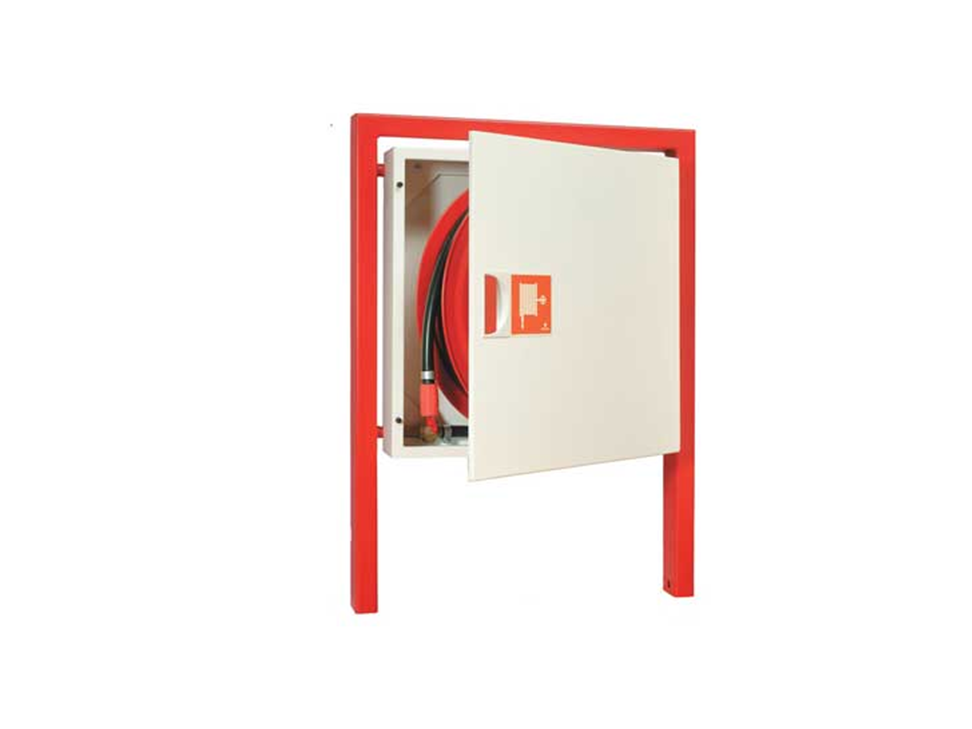- In high-rise buildings, on floors exceeding 60 m in size and in manufactories, workshops, warehouses, accommodation, health, assembly purposes and educational buildings with a total indoor usage area of more than 1000 m2, in parking garages with a total area of more than 600 m2, boiler rooms with a thermal capacity of more than 350 kW must have fire cabinets.
- Fire cabinets are placed as close as possible to the corridor exit and stair landing so that they can be easily seen.
- If the facility or building is not protected by a sprinkler system, fire cabinets are planned so that the distance between them is not more than 30 m on each floor and in each section separated by fire walls.
- If the building is protected by a sprinkler system and there are fire brigade water intakes on the floors, the fire cabinets can be fed through the wet pipe sprinkler system and the distance between them can be increased up to 45 m.
- In particular, the valves in the fire cabinet must be correctly dimensioned for the storage and ergonomic use of the reel and hose.
- Fire cabinets should only be used for fire response purposes.
- In buildings without trained personnel or firefighters with skills such as laying and connecting hoses, it is essential to install fire cabinets with round semi-rigid hoses in accordance with TS EN 671-1.
- The hose must be round semi-rigid, conforming to TS EN 694 norm, with a diameter of 25 mm.
- It is desirable that the length of the round side-set hose inside the cabinet does not exceed 30 m.
- The nozzle (lance) inside the fire cabinet must have a minimum 9.4mm orifice capable of performing fog-jet and on/off functions.
- In fire cabinets with round semi-rigid hoses without a fire brigade water intake nozzle, the design flow rate must be 100 l/min and the design pressure must be 400 kPa.
- Yangın dolabının Nozul (lans) girişindeki basıncın 900 kPa’ı geçmesi hâlinde, basınç düşürücü kullanılması gerekir.
- Although flat hoses are often used outdoors in conjunction with the fire hydrant system, they can be used in buildings where a trained fire extinguisher must be present.
- Fire cabinets with flat hose must comply with TS EN 671-2 standard.
- The nominal diameter of the flat hose must not exceed 50 mm, the length must not exceed 20 m and the lance must be capable of Fog/Jet and On/Off.
- The design flow rate of the fire cabinet must be 400 l/min. and the design pressure must be at least 400 kPa. If the pressure at the inlet of the fire escape exceeds 900 kPa, a pressure reducer must be used.
- Periodic maintenance of the fire cabinets and hose reel systems in the buildings specified in TS EN 671-3 standard must be carried out by the facility owner, building owner, manager or responsible official.
In addition to these requirements, depending on the risks inherent in the building, special cabinets can be defined and used for the situation and needs.
- FIRE CABINET TYPES
2.1.- Standard Single Compartment Fire Cabinets
In standard fire cabinets, the reel in the DKP sheet metal case is connected to a support that can rotate at an angle of 180°. 20 m or 30 m 1“ rubber hose with 1” ball or 2” corner valve is held wrapped around the reel. There is a nozzle in accordance with EN 671/1. Semi-rigid unbreakable rubber hose manufactured according to EN694 Markings in accordance with 92/58/EEC are provided on the outer cover of the cabinet.
2.2.- Fire Cabinets with Equipment or Cylinder Compartments
These fire cabinets have the same features as standard fire cabinets and additionally have a compartment in which a portable extinguisher can be placed. These fire cabinets, which are optionally available in two-compartment and three-compartment models, are also available in single-compartment vertical models, which are used especially in areas with limited space, where the portable extinguisher and hose reel are in the same volume.
2.3.- Special Design Fire Cabinets
Apart from standard fire cabinets preferred in residential, accommodation and industrial projects, it is preferred in projects where architectural visuality is at the forefront such as guest and customer reception areas of industrial facilities, luxury residences and hotels. Although the functional parts are generally standard in these fire cabinets, changes such as case material, paint or coating and cover material are shaped at the point of customer demands.
2.4.- Fire Cabinets with Foam Mixing
These are fire cabinets developed especially in case foam mixture is required to intervene in fires involving flammable and combustible liquids, i.e. chemicals such as hydrocarbons, solvents and alcohol in industrial projects. In addition to the standard products in the cabinet; fire cabinets equipped with foam mixer, foam tank and foam concentrate depending on the flammable liquid are preferred. The foam tank in these cabinets contains AFFF foam concentrate with a standard usage rate of 1% or 3%, AFFF-AR 3×3 if solvents and alcohols are involved, and foam can be obtained from the foam nozzle through a hose with an adjustable foam mixer. It can also be used with non-aspirating nozzles if film-forming foam concentrates are used. It can be produced in various capacities according to plant requirements.
2.5- Standard Single Compartment or Equipment Compartment Fire Cabinets with Canvas Hose In case of use with canvas hose; In standard fire cabinets, the reel in the DKP sheet metal case is connected to a support that is simplified and can rotate at an angle of 180°. It has a 2“ corner valve and 2” canvas hose must be wrapped around the reel and comply with TS 9222. The fire lance must be selected as jet/spray-open-close. It is allowed to be used in enterprises with firefighters or trained personnel in internal areas.
2.6.- Outdoor Fire Equipment (Hydrant) Cabinets
These are cabinets produced for the purpose of fire intervention using the environmental hydrant system located in the outer area. It is the cabinet containing the necessary equipment for fire intervention equipped with fire hose, jet/spray-opening-closing lance with suitable fittings to be connected to hydrant inlets in case of need. In the cabinets produced for use in the outdoor area, single or double reel 2“ and 2 ½” diameters canvas hose with German Type connection fittings manufactured in accordance with TS.EN671-2, and fire fighting nozzle and hydrant wrench are often included as standard elements. Outdoor hose cabinets should be fixed on a concrete base in a place that is easy to see and access. We recommend that the leg and mounting elements produced by the manufacturer of the outdoor fire cabinet that will allow fixing are supplied with the cabinets.
AKSAY Yangın performs Design, Engineering Calculations, Procurement, Installation-Testing and Commissioning and Contract Maintenance services of Fire Cabinet Systems with its trained Engineer and Technician staff.


